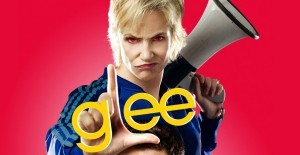Disney shows and ‘Glee’ are worse than you thought
By Angela Espinoza, Arts Editor
I’ve accepted that I watch a disgusting amount of television, and I’ve noticed a lot of today’s shows are oddly aggressive.
There’s a traditional level of aggression; there always needs to be an antagonist of some sort, whether it be a person or the idea of failure. But that aggression comes from the fear of being stopped from achieving your larger goal, and thus we cheer whenever something like Team Rocket goes “blasting off again.” I’m not talking about that kind of aggression.
What I’m talking about can fit into a number of categories, whether it be sexist, racist, homophobic, or straight-up cruel. The term bullying comes to mind. You see it in a lot of different shows now, and while some of it is in our sitcoms like Two and a Half Men and mortifyingly failed pilots like Work It, what concerns me is that the bulk of it is in shows that reach the teen demographic. The best examples of what I’m talking about come from Disney’s slew of live-action shows and the Ryan Murphy series Glee.
I’m putting a deeply rooted hatred of these shows’ qualities aside, because we’re not talking about plot or characters or any of that—we’re talking about the shows overall.
I’m also not coming into this topic out of left field. A number of us have younger siblings, cousins, nieces, or nephews, and I’m no exception to this. I have a younger sister who is delightful, pretty, and would probably be considered “popular.” She’s the target audience of these shows, and she will be our test subject for this article.
While she doesn’t watch these shows every day, she does watch them whenever humanly possible. In addition to Glee, she watches a great deal of Hannah Montana, That’s So Raven, Cory in the House, any variation of Zack and Cody, and a few others. Something Disney shows all have in common—besides degrading actual actors—is an unsettling amount of aggression that’s always glossed over.
Our attractive protagonists are always striving for perfection—their great internal battle—while our attractive antagonists (and often love interests) are shallow (“I am good looking” being a go-to line, followed by laugh track). So when a character shows up that looks physically “normal,” it should be known that these characters are comic reliefs (“I am pretty fat/gross/sweaty/etc.” being their go-to lines, also followed by a laugh track). It should also be known that these types of comic reliefs are always Caucasian; I point this out because Disney, being oh-so-diverse in its casting, makes a point of placing characters with obvious racial differences in side roles where they can’t be insulted on their appearance—unless they’re the lead characters, where weight issues and the like are an obvious replacement for race issues.
What ends up happening is teens are further encouraged to pick out people’s differences, and then attack them because of it. I know this because, as a bystander, I’ve picked up on my sister’s group friend chats, and a lot of their aggression is aimed towards “that fat bitch,” or “that black asshole.” Adding those connotations makes no difference except that they are pointing them out specifically. Of course these shows don’t make kids outright racist or homophobic, but pointing out that those things are different, if not “weird,” sticks with kids.
And then we have Glee, which takes everything Disney shows do psychologically and shoves them down our throats. There are no redeeming characters in Glee, because whether the antagonist is “too thin” (and since a protagonist is saying it, that’s okay) or the antagonist decides being “too gay” is a problem (they’re an antagonist, so that’s not okay), somebody is attacking somebody.
A lot of Ryan Murphy’s television producing career has been based on the idea of reverse psychology; if everyone in his shows are complete assholes, the viewer won’t be. Doesn’t work that way, Murphy.
In my younger years, I watched another Murphy show: Popular. Popular was like an early Glee without the singing. While the characters were rude to virtually everybody, you only had the occasional crazy character, who was so over-the-top it didn’t hit the audience as hard. All of Glee’s characters are over-the-top, so when that becomes the new normal (ba-zing), suddenly everything they say is taken literally.
I think where most of this writing style stems from is that junior high and high school are not particularly easy for everyone. There’s going to be bullying—most of which stops at some point, and even if it doesn’t, kids get through it most of the time. The main problem is that a lot of kids think high school is the end of their lifetime, and these shows seem to pound that idea into their heads. I’m aware the kids in Glee go to post-secondary and whatnot—it doesn’t matter when everyone in post-secondary is just as cruel as they were in high school.
I don’t know what these shows are trying to tell kids, but it’s definitely disturbing.

